Chess
Notes
|
| First column | << previous | Archives [67] | next >> | Current column |
6476. What?
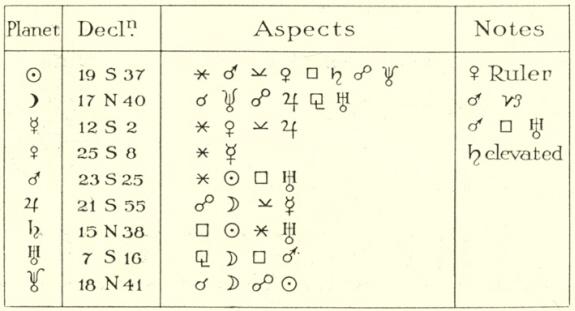
6477. First chess club
From Robert John McCrary (Columbia, SC, USA):
‘I have found a reference suggesting an earlier club than the ones noted in your Chess Records article. On page 264 of volume two of Chess by R. Twiss (London, 1789) a Dublin historian named Jos. C. Walker was quoted as saying in a letter:
“A Chess-club consisting of some of the principal nobility and gentry was formed in Dublin about 40 years ago: but, like all private associations, its existence was of short duration.”
That would imply a date of about 1749 for the “club”, but it is impossible to ascertain from this brief reference whether it was a formally-organized body.
On page 265 of the same work a “letter from Edinburgh” was quoted as follows:
“There was formerly a Chess-club here, but of late in general every game has given place to Cards.”’
6478. Pillsbury and Marshall games
Dominique Thimognier (Fondettes, France) sends this game from page 6 of L’Echo de Paris of 16 March 1903:
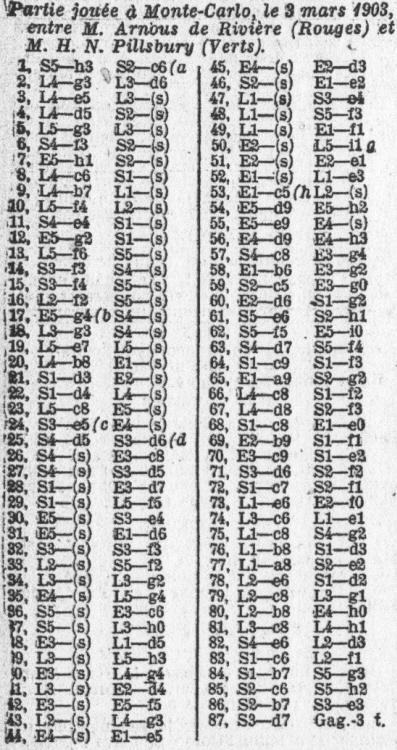
For more information, see the complete column.
Our correspondent has also provided, from page 6 of L’Echo de Paris of 8 April 1901, the game Marshall v Henig, Monte Carlo, March 1901.
6479. Blackburne Shilling Gambit (C.N.s 3786 & 6470)
Wanted: solid contemporary sources for a brevity commonly ascribed to Boris Kostić: 1 e4 e5 2 Nf3 Nc6 3 Bc4 Nd4 4 Nxe5 Qg5 5 Nxf7 Qxg2 6 Rf1 Qxe4+ 7 Be2 Nf3 mate.
The occasion is generally given as Cologne, 1911 or 1912, with White’s name rendered as Muelock, Muhlock, Mulok, etc.
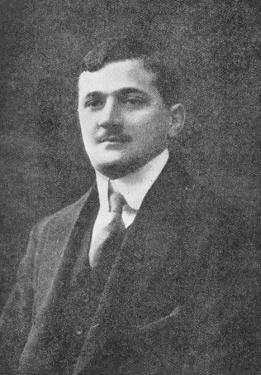
Boris Kostić
6480. What? (C.N. 6476)
From page 72 of Chess Pie, 1922:
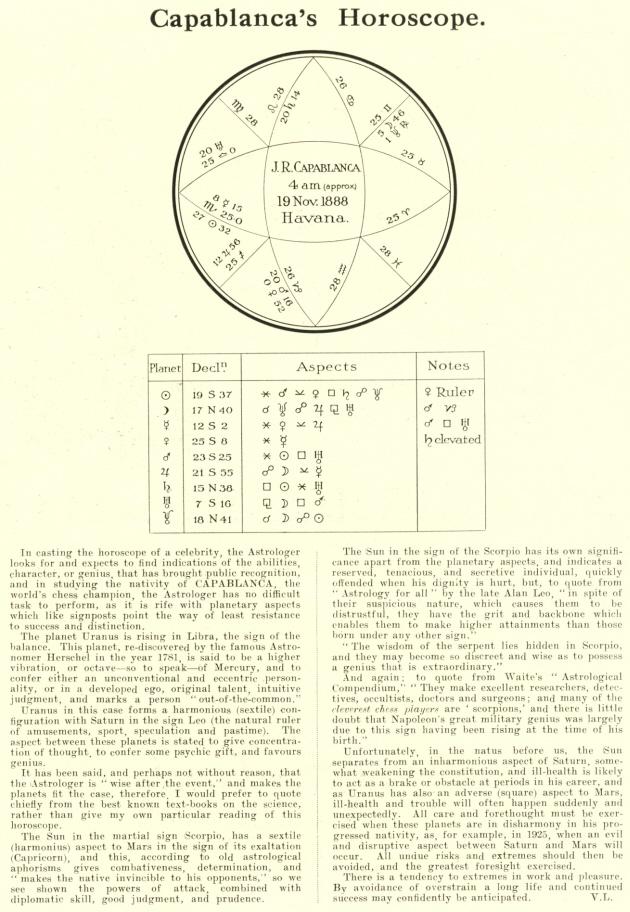
6481. Capablanca in Paris
Page 316 of our book on Capablanca mentioned that The Times of 30 March 1922 (page 16) had a photograph of the Cuban in Paris playing Aurbach ‘at the table used by the Emperor Napoleon’. The picture is reproduced below:
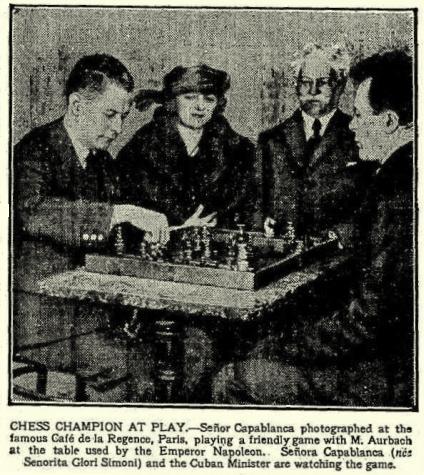
Can a copy of better quality be found?
6482. Flohr v Grob (C.N.s 4309 & 4382)
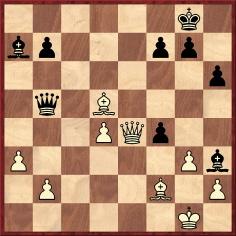
C.N. 4309 asked about the first publication of the above erroneous diagram (erroneous because, in addition to the misplacing of the queen’s-side pawns, the pawn at f4 should be white).
Richard J. Hervert (Aberdeen, MD, USA) notes that the diagram appeared on page 13 of the first edition of Gerald Abrahams’ Test your chess (London, 1963). The solution on the following page was:
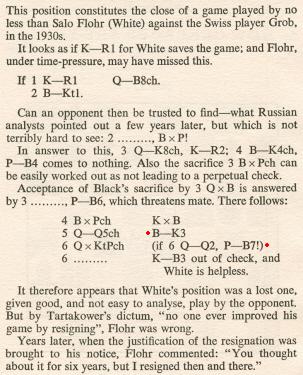
Our correspondent remarks that 6...f2 is an oversight, since 7 Qxf2 gives check. The 1975 edition of Abrahams’ book corrected the sequence to 5 Qd5+ Kg6 6 Qe4+ Bf5, and Black wins.
6483. Postcard (C.N.s 6406, 6448 & 6454)
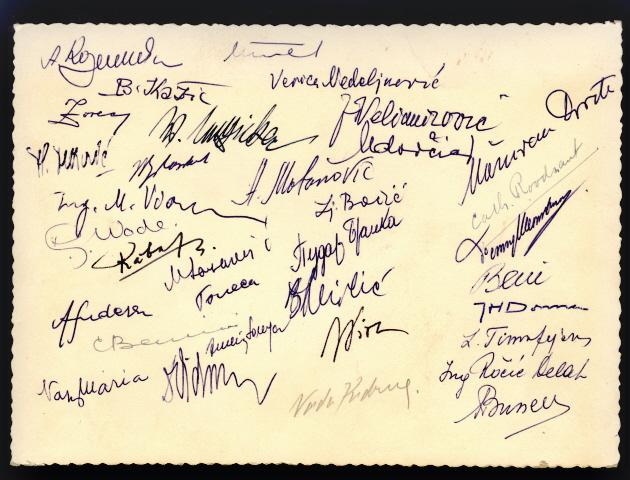
Leonard Barden (London) identifies the signatures as follows (in vertical rows):
First: N.N., B. Kažić, N.N., N.N., Ing. M. Vidmar, R. Wade, A. Fuderer, C. Benini, M. Nagy;
Second: W. Unzicker, H. Golombek, M. Lazarević, G. Porreca, N.N., Dr M. Vidmar;
Third: N.N., V. Nedeljković, J. Velimirović, M. Udovčić, A. Matanović, L. Bačić, V. Pirc, N.N.;
Fourth: N.N., C. Roodzant, F. Heemskerk, A. Beni, J.H. Donner, L. Timofejeva, N.N., S. Bussers.
6484. Beginning Chess (C.N. 1809)
C.N. 1809 quoted from page 218 of Beginning Chess by Harry Golombek (Harmondsworth, 1981):
‘It is one of the many delights of chess that it is a literate game for literate people, and this means that a good book on chess is almost inevitably a pleasure to read. Here, therefore, follows a list of further reading which I think you will find both enjoyable and profitable.’
We commented:
The list features 14 titles. Golombek wrote four of them, translated three, co-authored one and wrote the foreword to one. The remaining five managed to be good without him.
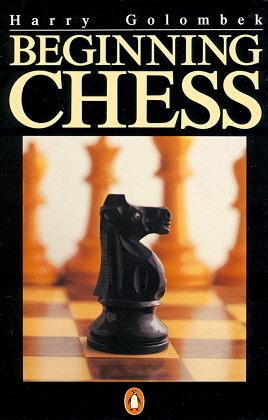
Here, a new matter is raised. On pages 61-62 of Beginning Chess Golombek recalled that at the British Championship in Harrogate in 1947 he won his last-round game against B.H. Wood and was then leading the tournament by half a point, ahead of R.J. Broadbent.
‘I stayed to watch his game against R.H. Newman; if he won this game, then he won the championship; if he drew then we were level and would have to play off a match for the title; and if he lost, then I won the championship.
The game grew very exciting and suddenly I noticed that Newman could promote a pawn to a knight, giving check and forcing a win. He did promote the pawn – but to a queen; and after many complications the game was drawn. Afterwards I asked him why he hadn’t made a knight instead of a queen: “Never thought of it”, was the reply. Well, if you have a similar situation, no doubt you will think of it.’
Only the conclusion of the game was given in the BCM (September 1947, page 293):
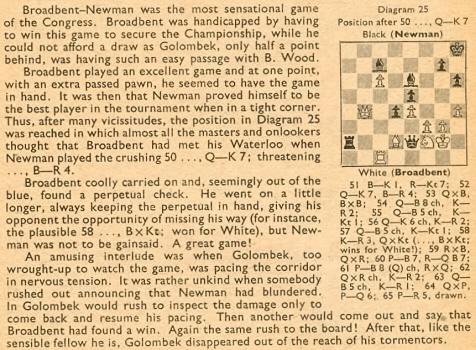
Despite the description ‘the most sensational game of the Congress’, we have yet to find the complete game-score.
6485. Carlos Torre’s breakdown (C.N.s 5759 & 5767)
Olimpiu G. Urcan (Singapore) writes regarding the suggestion in the Oxford Companion to Chess that Carlos Torre’s nervous breakdown was prompted by receipt of two distressing letters, just before his last-round game against Edward Lasker at Chicago, 1926.
In Hermann Helms’ chess columns in the Brooklyn Daily Eagle of 1926-27 Mr Urcan has found no mention of such an incident in relation to the tournament, which Helms attended. On 26 October 1926 Helms gave some details of Torre’s return to Mexico:
‘Carlos Torre, Mexican chess champion, sailed Saturday on board the steamship Monterey of the Ward Line bound for his home in Mérida, Yucatán, by the way of Havana and Progreso. The young international expert returned to this country a little over two months ago in order to play in the national tournament at Chicago, where he finished second on a level with Maróczy of Hungary and just below Marshall, the United States champion. Since his return to New York Torre has been in poor health and has gone home to rejoin his parents. In the milder climate of his native land he hopes for speedy recuperation.
Antonio Canto, another native of Mérida, and Emilio Deymier, both members of the Philidor Chess Club of this city, were passengers on the same ship. Before leaving Mexico City, where he won the national chess championship in a tournament, Torre obtained strong backing for a match with Marshall for the pan-American championship, but negotiations that were set afoot were discontinued.’
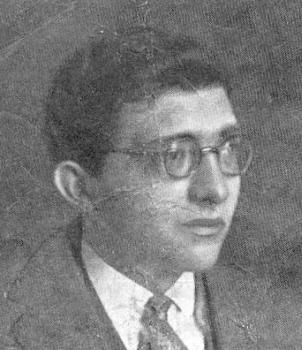
Carlos Torre
Moreover, Helms obtained some details by interviewing F.C. Lona. From the Brooklyn Daily Eagle of 26 May 1927, page 16:
‘Torre Regaining Health
Carlos Torre, who suffered a breakdown several months ago and returned home to his parents in Mérida, Mexico, has regained his health, according to F.C. Lona of Manhattan, Mexican railway and press representative and a personal friend of the young Mexican chess champion. “He was aware that his health was failing him”, said Mr Lona, “when he noticed that he had to over-exert himself in capturing the Mexican championship and later, when in Chicago, he had to lash himself to the utmost to bring forth his best in the masters’ tournament in which he came out second. Then, instead of taking a much needed rest as soon as he arrived in New York, he devoted himself to translating Dr Lasker’s book Lehrbuch des Schachspiels, which task, Torre asserts, proved to be gigantic and constituted the traditional straw.
He is now gaining on weight and in general physical health and believes that he will be fit to compete in the next Mexican chess championship during June. If, after that championship, he feels confident that he has become his old self as a chessplayer, he intends to step out into the world and continue his chess career as an internationalist.
Torre’s many friends here feel that he will be well advised if he abstains entirely from serious chess for another year and then, fully reinvigorated perhaps, re-enter the arena which gave him world-wide fame.’
What further information can be found, and not least about the translation matter?
6486. Stifled
Victor Ivanovich Soultanbéieff – Louis Joseph AmbuhlBrussels, 1943
Queen’s Gambit Declined
1 d4 d5 2 c4 c6 3 Nf3 Nf6 4 e3 g6 5 Nc3 Bg7 6 Qb3 Qb6 7 Bd2 Nbd7 8 Bd3 O-O 9 O-O Re8 10 cxd5 Qxb3 11 axb3 Nxd5 12 Nxd5 cxd5 13 Ra5 Nb6 14 Rc1 a6 15 Rc7 Rb8 16 e4 Be6 17 Bf4 Bf6 18 e5 Bg7 19 b4 Rec8
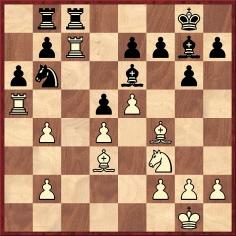
20 Rcc5 Nd7 21 Rxc8+ Rxc8 22 b5 axb5 23 Rxb5 b6 24 Ng5 Ra8 25 Nxe6 fxe6 26 Kf1 Kf7 27 Rb4 Ke8 28 h4 Kd8 29 g4 Kc7 30 Rb3 Rf8 31 Bg5 Rf7 32 h5 gxh5 33 gxh5 Bf8 34 h6 Kb7 35 Ke2 Nb8 36 Bb5 Rf5 37 f4 Rf7 38 Rc3 Rf5 39 b4 Rf7 40 Be8 Rf5 41 b5 Resigns.
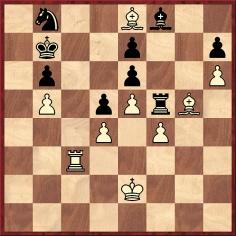
Regarding the final position, Soultanbeiéeff wrote (in our translation):
‘After the only remaining king move, 41...Ka8 or 41...Ka7, White plays 42 Rc7(+), and no black piece can move without being taken. A tragicomic situation.’
Only the final position was given in C.N. 1333 (see page 16 of Chess Explorations), from Soultanbéieff’s collection of best games (pages 93-94). Nowadays it is rather difficult to find even the reprint, Le maître de l’attaque (Paris, 1974), which was also mentioned in C.N. 6253. The original edition, Guide pratique du Jeu des Combinaisons (Brussels and Liège, 1950/51), seems particularly scarce.
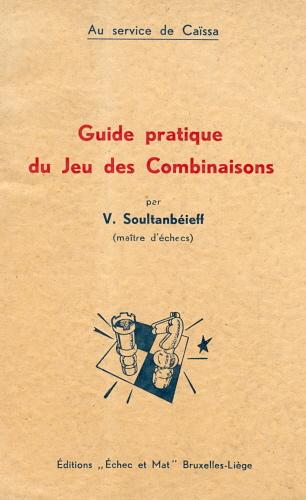
A number of Soultanbéieff’s tactical finishes were given in Combinations The Heart of Chess by Irving Chernev (New York, 1960).
6487. Rubinstein’s comportment
From pages 77-78 of Soultanbéieff’s Guide pratique du Jeu des Combinaisons, in the introduction to his draw against Rubinstein at Liège, 1930 (our translation):
‘Once he had played his move, Rubinstein would leave the table and sit in a corner of the hall. When his opponent’s reply had been made, he came back unhurriedly to the board. The waste of time was evident, and Rubinstein, a very slow player, suffered from it frequently (it is known how many games he lost on time). One day I asked him why he did not remain at the board to await his opponent’s reply, which was sometimes imminent, and the explanation he gave me astounded me in the mouth of a professional master: “So as not to disturb my opponent; some players are not at ease when one watches them thinking.”’
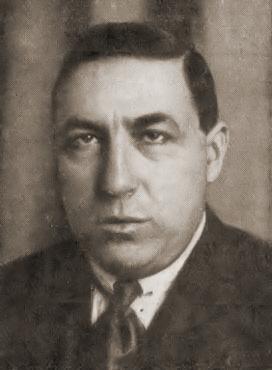
Akiba Rubinstein
6488. Bayonet attack
Who coined the term ‘bayonet attack’?
The earliest occurrence found by us is on page 322 of the November 1899 Deutsche Schachzeitung, in an article by C. Schlechter:
‘Weiss kann nach dem Textzuge wohl den Bajonnetangriff mit 12 g4 riskiren.’
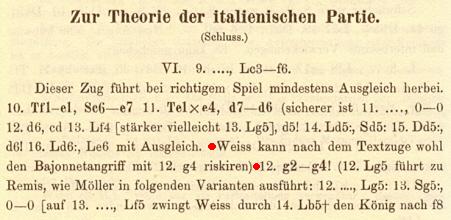
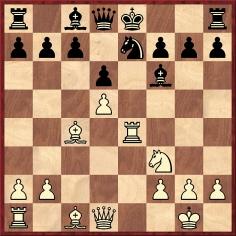
The position in question (after 11...d6 and before 12 g4) arose in the Møller Attack, as in the game Lazard v Gibaud on page 24 of our book on Capablanca. The association between Schlechter and the bayonet attack was made in the Giuoco Piano chapter of Modern Chess Openings (various editions).
‘Bayonet attack’ was also used in an article ‘Fantasy in Chess’ by S. Tartakower on page 5 of the May 1933 Chess Review, regarding 1 e4 c6 2 d4 d5 3 e5 Bf5 4 g4. On page 132 of the August 1934 issue of the same magazine F. Reinfeld contributed an article entitled ‘The Bayonet Attack’ which concerned 1 d4 f5 2 e4 fxe4 3 Nc3 Nf6 4 g4.
See also, for instance, page 379 of Books II and III of 500 Master Games of Chess by S. Tartakower and J. du Mont (London, 1952), where ‘bayonet attack’ was used to describe 12 g4 in a Sicilian Defence game. It may also refer to the double-advance of the b-pawn, as on page 167 of The Most Instructive Games of Chess Ever Played by I. Chernev (New York, 1965). Annotating Bronstein v Palmiotto (Munich, 1958) on page 61 of The Golden Dozen (Oxford, 1976), Chernev wrote of 7 h4: ‘This sort of bayonet attack was rarely, if ever, seen in Morphy’s day ...’
6489. Capablanca in Warsaw
From Tomasz Lissowski (Warsaw) we have received two photographs of Capablanca taken in the Polish capital in 1935:
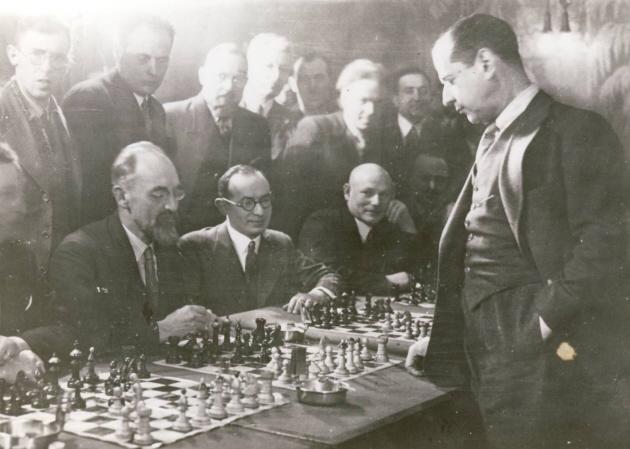
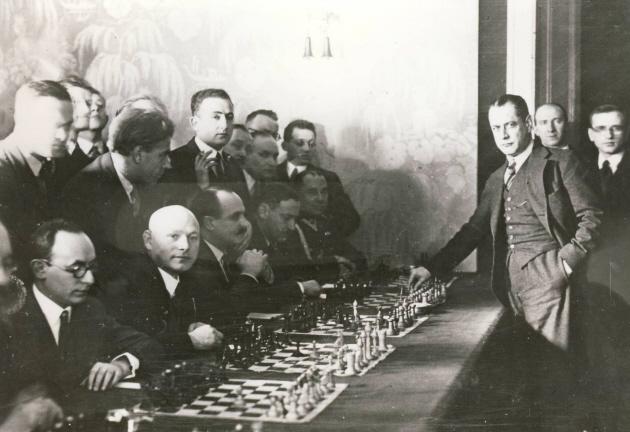
In the second photograph, our correspondent identifies the man in military uniform, seated at the back, as Colonel Marian Steifer, whose game against the Cuban has been anthologized.
6490. Unusual title
Yakov Zusmanovich (Pleasanton, CA, USA) draws attention to a book compiled and edited by Leonid Svetlov and published in Khabarovsk in 1996:
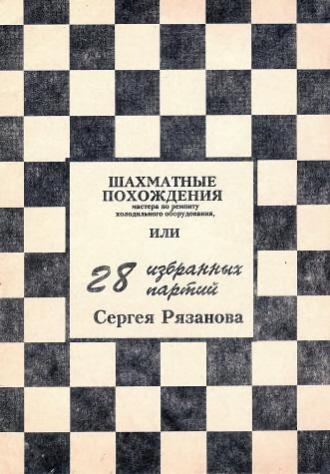
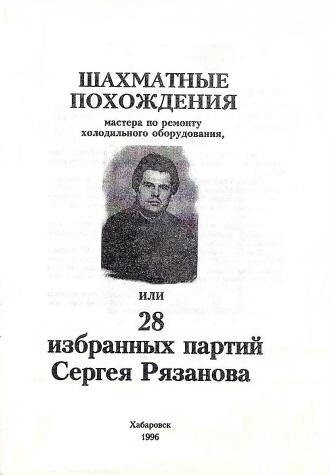
The title of the book, Шахматные Похождения мастера по ремонту холодильного оборудования или 28 избранных партий Сергея Рязанова, may be translated into English as ‘Chess Adventures of a Refrigerator Repair Technician, or 28 games of Sergei Ryazanov’.
6491. Skittles
Below is an article by G.H. Diggle, the ‘Badmaster’, from page 63 of Chess Characters (Geneva, 1984). Its original publication was in Newsflash, December 1980.
‘Though the two most famous games ever played (the “Immortal” and “Morphy v the Duke & the Count”) were offhand games, the offhand game as such is now practically extinct in Chess Periodicals, and far less often seen going on in Chess Clubs, where members go either to play in a match or in the Club Tournament. Things were the other way round in 1921, when the BM joined the Lincoln Chess Club. On Club nights, members just dropped in and took on either habitual opponents or whoever else was there, and though there was a Club Tournament (American) wobbling along on two cylinders throughout the season, it finished each Spring like the Grand National, with a mere handful still running. Indeed, serious tournament concentration was almost impossible in a small clubroom over a Café, especially if those two inseparable chess cronies J.E. Bond (the noisiest player the BM has ever known, but an immensely popular septuagenarian who hadn’t the faintest idea how much noise he was making) and George Sparke, a taciturn Collector of Taxes, were in confrontation. Sparke seldom spoke a word, but J.E.B. was such a grandmaster of commotion that even when he was heard clumping up the stairs before bursting in upon us, all the games would stop automatically and everyone would brace himself for what was coming: “Now what about a skittle, George? Are you ready for a skittle? Just skittle Chess, you know, George, just chess of the skittle variety – if you are not playing anyone else, George, let us jointly indulge in a skittle.” J.E.B. always, so to speak, gave utterance in triplicate, building up a crescendo of embellishments at every repetition, e.g. White (Sparke) 1 P-K4 Black (J.E.B.) 1 P-K4 “Yes, George, we’ll stick to the old firm, George – we’ll stick to the old firm, George, we will stick to ye olde firm.” 2 N-KB3 P-Q3 Pedantic onlooker. “Ah, the Philidor Defence, Mr Bond.” J.E.B.: “What? What? I don’t care what-a-door it is – he’ll find it a Barndoor Defence before he’s done with it – a Barndoor Defence – a defence of a Barndoor character.” But six moves later he loses a piece: “Something is rotten in the State of Denmark – something is extremely rotten in the State of Denmark at this present moment – I feel it in my bones that something is incurably rotten in the State of Denmark at this present moment of time.” Later obtains some counter-play: “Now this is very interesting, George, this is ext-er-emely interesting – this game has aspects about it that are most remarkably interesting.” Neurotic Youth two boards away: “I say, Mr Bond, we are trying to play a tournament game over here.” J.E.B: “What? What? I didn’t quite catch your remark.” Neurotic Youth: “Er – this is a tournament game here, Mr Bond.” J.E.B: “All right, I’ll be there in a minute – I am playing Mr Sparke a skittle at this present moment – but I can assure you that the moment we have finished I will most certainly come and have a look at this very interesting tournament game.” (Collapse of Neurotic Youth, and general explosion which shakes the Café.)’
6492. Games sought
Luis Méndez Castedo (Gijón, Spain) is looking for games played at Gijón, 1954. The tournament, held in July-August, was won by Román Torán.
6493. ‘Last throes’
An addition to Breyer and the Last Throes is another affirmation lacking any reference to 1 e4:
‘... the Hungarian Breyer claimed that in the opening position (with all the pieces and pawns still unmoved) White’s game was in the last throes.’
Source: Chess Traps, Pitfalls, and Swindles by I.A. Horowitz and Fred Reinfeld (New York, 1954), pages 74-75.
6494. Chess and insanity
From R.J. Buckley’s chess column on page 21 of the Birmingham Weekly Mercury, 1 July 1905:
‘Chess does not make for insanity. The study of chess makes for sanity – makes the sane more sane than before. Nations of chessplayers are the sanest, must be the sanest, of nations. The Irish lunatic asylums are thicker on the ground than in any other country. The Irish are not chessplayers. They become lunatics because they lack the brain exercise that chess, or something like chess, could give. Chessplayers are the sanest people in the world, just as athletes are the strongest. Athletes are strong and healthy through using their muscles. Chessists are sane because they keep their brains in working order.’
| First column | << previous | Archives [67] | next >> | Current column |
Copyright: Edward Winter. All rights reserved.